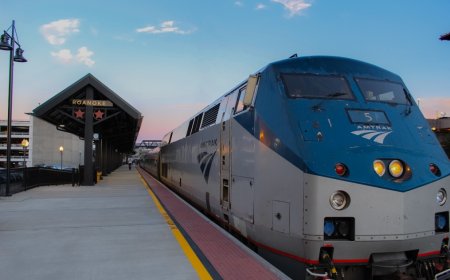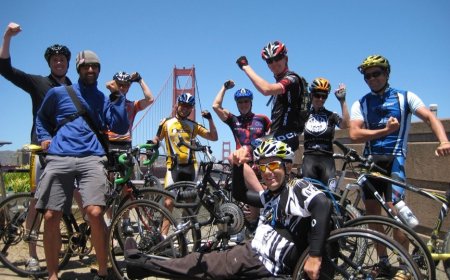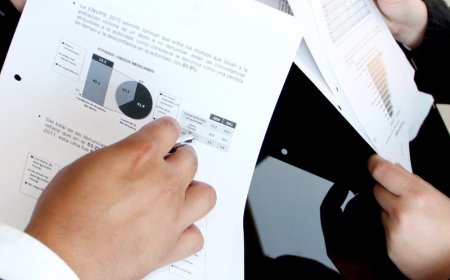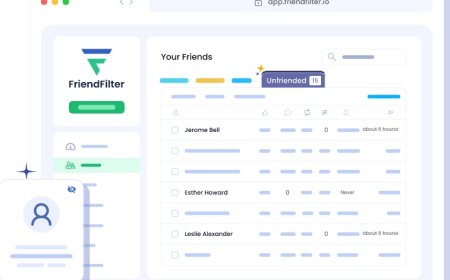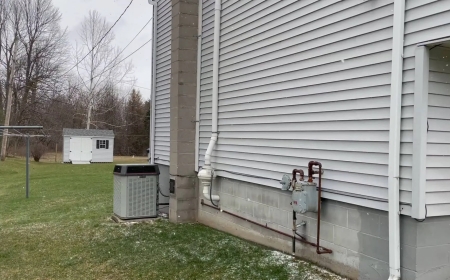How To Find Carne Asada Plate Dallas
How to Find Carne Asada Plate Dallas For food enthusiasts and travelers alike, finding an authentic carne asada plate in Dallas is more than just a meal—it’s a cultural experience. Carne asada, Spanish for “grilled meat,” is a staple of Mexican and Tex-Mex cuisine, featuring thinly sliced, marinated beef grilled to perfection and served with traditional sides like refried beans, rice, grilled onio
How to Find Carne Asada Plate Dallas
For food enthusiasts and travelers alike, finding an authentic carne asada plate in Dallas is more than just a meal—it’s a cultural experience. Carne asada, Spanish for “grilled meat,” is a staple of Mexican and Tex-Mex cuisine, featuring thinly sliced, marinated beef grilled to perfection and served with traditional sides like refried beans, rice, grilled onions, and warm tortillas. In Dallas, a city rich with diverse culinary influences, the search for the best carne asada plate can feel overwhelming. With hundreds of taquerias, food trucks, and Mexican restaurants scattered across neighborhoods like Oak Cliff, East Dallas, and Little Mexico, knowing where to look—and what to look for—can make all the difference.
This guide is designed to help you navigate the Dallas food scene with confidence. Whether you’re a local looking to rediscover your favorite spot or a visitor seeking an unforgettable taste of authentic Mexican grilling, this comprehensive tutorial will walk you through the most effective strategies to find the finest carne asada plate in the city. We’ll cover practical search techniques, insider tips, essential tools, real-world examples, and frequently asked questions—all tailored to ensure you don’t just find a meal, but a memorable culinary experience.
Step-by-Step Guide
Finding the perfect carne asada plate in Dallas requires more than a quick Google search. It demands a strategic approach that combines local knowledge, digital tools, and sensory evaluation. Follow these seven detailed steps to ensure you’re not just eating any carne asada—but the best.
Step 1: Define What Makes a Great Carne Asada Plate
Before you begin your search, understand the components of a high-quality carne asada plate. Authentic versions typically feature:
- Thinly sliced flank or skirt steak, marinated for at least 4–12 hours in a blend of lime juice, garlic, cumin, oregano, and sometimes orange juice or soy sauce.
- Char-grilled to medium-rare, with visible grill marks and a slightly crispy exterior that gives way to a juicy, tender interior.
- Traditional accompaniments: refried beans (not canned), Mexican-style rice with tomato and garlic, grilled onions and bell peppers, fresh cilantro, lime wedges, and house-made tortillas (corn or flour).
- Optional extras: guacamole, pico de gallo, sour cream, or a side of salsa verde or roja.
Avoid places that serve pre-sliced, frozen, or overcooked meat. A great plate should feel handmade, not mass-produced.
Step 2: Use Localized Search Queries
Generic searches like “best carne asada in Dallas” return generic results. To get precise, location-specific data, refine your search terms:
- “Best carne asada plate Oak Cliff Dallas”
- “Authentic Mexican carne asada near me”
- “Carne asada plate with handmade tortillas Dallas”
- “Top-rated carne asada food truck Dallas”
Use Google’s autocomplete feature to discover commonly searched phrases. Type “carne asada plate Dallas” into the search bar and note the suggested queries—they reflect real user intent and can guide your research.
Step 3: Leverage Google Maps and Local Reviews
Google Maps is your most powerful tool. Open the app or website and search for “carne asada plate.” Filter results by:
- Rating: Look for restaurants with 4.5 stars or higher.
- Number of reviews: Prioritize places with 200+ reviews—this indicates consistent quality and popularity.
- Photos: Scroll through user-uploaded images. Look for close-ups of the meat, tortillas, and sides. Authentic spots often show charred edges and vibrant colors.
- Review keywords: Scan reviews for phrases like “best in Dallas,” “real deal,” “grilled to order,” or “tortillas made fresh daily.” Avoid places with repeated complaints about “rubbery meat” or “bland seasoning.”
Don’t overlook the “Questions & Answers” section. Locals often ask, “Do they use skirt steak?” or “Is the carne asada marinated overnight?” These can reveal insider truths.
Step 4: Explore Food Blogs and Local Influencers
Dallas has a thriving food blogging community. Search for terms like “Dallas carne asada review” or “best Mexican food Dallas foodie.” Websites like Dallas Foodie, DFW Eats, and Grub Street Dallas regularly publish detailed guides with photos and personal experiences.
Instagram and TikTok are equally valuable. Search hashtags like:
DallasCarneAsada
CarneAsadaDallas
TexasMexicanFood
DallasFoodTruck
Follow local food influencers such as @dallasdineout or @texasfoodchronicles. Their short videos often show the sizzle of the grill, the steam rising from fresh tortillas, and the texture of the meat—details no written review can fully capture.
Step 5: Visit Neighborhoods Known for Authentic Mexican Cuisine
Dallas has several neighborhoods where Mexican culinary traditions run deep. Prioritize your search in these areas:
- Little Mexico (South Dallas): The historic heart of Dallas’s Mexican community. Home to family-run taquerias like El Fenix and La Calle.
- Oak Cliff: Known for its vibrant street food scene. Try La Parilla or El Camino Real for traditional grilling.
- East Dallas (particularly around the Bishop Arts District): Offers a fusion of modern and traditional. Barrio is a standout for upscale yet authentic plates.
- Irving and Garland: These suburbs have high concentrations of Mexican families and excellent, less-touristy options like El Ranchito and La Frontera.
Drive or walk through these neighborhoods. Look for restaurants with handwritten signs in Spanish, outdoor seating with string lights, and lines of locals waiting to order. These are signs of authenticity.
Step 6: Call Ahead and Ask Specific Questions
Don’t rely solely on online reviews. A quick phone call can reveal critical details:
- “Do you use skirt steak or flank steak for your carne asada?”
- “Are the tortillas made fresh daily?”
- “Is the meat marinated overnight?”
- “Can I get it with grilled onions and peppers?”
Responses matter. A confident, enthusiastic answer (“Yes, we use skirt steak and marinate it 12 hours with fresh lime and garlic”) signals pride in the craft. A vague or hesitant reply (“Uh, we use beef… it’s good”) is a red flag.
Step 7: Visit During Peak Hours and Observe
Timing matters. Visit between 12:00 PM and 2:00 PM on a weekday. This is when locals eat, and the kitchen is running at full capacity. Watch how the staff operates:
- Is the grill constantly active? Are cooks flipping meat in real time?
- Do they prepare tortillas on-site? Look for a small tortilla press or a stack of warm, freshly made tortillas behind the counter.
- Are customers ordering the carne asada plate? If yes, it’s a good sign.
Also, observe the side dishes. Are the beans creamy and rich? Is the rice slightly tomato-infused and fragrant? Is the lime freshly squeezed? These small details confirm authenticity.
Best Practices
To maximize your chances of finding the best carne asada plate in Dallas, follow these proven best practices. These are not just tips—they’re habits of seasoned food explorers.
1. Prioritize Family-Owned Establishments
Family-run restaurants often preserve traditional recipes passed down through generations. These spots rarely have elaborate marketing budgets, but their food speaks for itself. Look for names like “Abuelita’s,” “La Cocina de Maria,” or “Casa de Carlos.” These often indicate multi-generational ownership and authenticity.
2. Avoid Chains with Standardized Menus
While national chains like Chipotle or Moe’s offer convenience, their carne asada is often pre-marinated, pre-cooked, and reheated. The texture and flavor lack the depth of freshly grilled meat. Stick to independent restaurants where the kitchen is visible and the grill is active.
3. Look for Spanish-Language Menus
A menu written primarily in Spanish, even if English translations are available, suggests the restaurant caters to native speakers. This often correlates with higher authenticity. Words like “carne asada,” “frijoles refritos,” “arroz mexicano,” and “tortillas hechas a mano” are good indicators.
4. Ask for Recommendations from Locals
When you’re in a neighborhood known for Mexican food, strike up a conversation. Ask a cashier, a busboy, or even someone waiting in line: “Where do you go for the best carne asada?” Locals rarely steer you wrong. They know which place uses the best lard in the beans, which one grills the meat over mesquite, and which one serves the warmest tortillas.
5. Visit Multiple Locations for Comparison
Don’t settle after one try. Visit at least three different spots within a week. Compare the marination, the char, the texture of the meat, the seasoning of the rice, and the warmth of the tortillas. Keep a mental or written log. You’ll begin to notice subtle differences that separate good from extraordinary.
6. Order the Plate, Not Just the Meat
Some restaurants offer carne asada tacos or burritos, but the “plate” is the true test. A full plate includes all the traditional sides, allowing you to assess the entire culinary experience. A great plate balances flavors: the acidity of lime, the earthiness of beans, the sweetness of grilled onions, and the smokiness of the meat.
7. Be Willing to Wait
Authentic carne asada takes time. The meat needs to marinate. The grill needs to be hot. The tortillas need to be pressed and cooked fresh. If a restaurant serves your plate in under five minutes, it’s likely prepped in advance. Patience is rewarded.
8. Avoid Overly Tourist-Focused Areas
Restaurants near major tourist attractions like the Dallas Arts District or the American Airlines Center often cater to visitors with diluted, “Americanized” versions of Mexican food. Skip these spots unless you’re desperate. Head instead to residential neighborhoods where the clientele is primarily Mexican-American.
Tools and Resources
Modern technology has revolutionized how we discover food. Below are the most effective digital tools and resources to help you locate the best carne asada plate in Dallas.
Google Maps
Google Maps remains the most reliable tool for location-based searches. Use filters for ratings, photos, and reviews. Save your favorite spots to a custom list labeled “Dallas Carne Asada Quest.” Enable location services to see nearby options in real time.
Yelp
Yelp’s review system allows you to sort by “most recent” and “highest rated.” Pay attention to photos and detailed reviews. Use the “filters” feature to narrow results by “Mexican,” “Lunch,” and “Outdoor Seating.”
Resy and OpenTable
While primarily for reservations, these platforms list popular restaurants with customer ratings. Search for “carne asada” in Dallas and sort by popularity. Many top-rated spots here are also highly reviewed on Google and Yelp.
Instagram and TikTok
Search hashtags:
DallasCarneAsada, #CarneAsadaTexas, #DallasFoodTruck. Follow local food bloggers. Many use Stories to show live cooking processes, which helps you assess freshness and technique.
Food Blogs and Podcasts
- Dallas Foodie – Weekly reviews of hidden gems.
- DFW Eats – Monthly guides to regional specialties.
- The Texas Table (Podcast) – Episodes dedicated to Tex-Mex cuisine.
- Grub Street Dallas – In-depth articles on neighborhood restaurants.
Local Community Boards
Check Facebook groups like “Dallas Food Lovers” or “Mexican Food in Dallas.” Members often post photos, ask for recommendations, and share recent visits. These groups are goldmines for real-time, unfiltered opinions.
Maps.me and AllTrails (for Food Trucks)
Many of Dallas’s best carne asada plates come from food trucks. Use Maps.me to download offline maps of Oak Cliff and East Dallas. Search for “food truck” pins. AllTrails sometimes lists food truck locations near parks—useful for weekend searches.
Google Lens
Take a photo of a menu or a dish you see in person. Use Google Lens to translate Spanish terms instantly. This helps you understand what you’re ordering and spot authentic ingredients.
Uber Eats and DoorDash Filters
While delivery apps are convenient, use them strategically. Filter for “Mexican” and sort by “Top Rated.” Read reviews carefully—look for comments like “tortillas were warm,” “meat was juicy,” or “beans tasted homemade.” Avoid places with reviews saying “tasted reheated” or “soggy.”
Real Examples
To ground this guide in reality, here are five real Dallas restaurants known for exceptional carne asada plates, based on consistent reviews, local acclaim, and authentic preparation.
1. La Parilla – Oak Cliff
Located on South Lamar Street, La Parilla has been a neighborhood staple since 1982. Their carne asada plate features skirt steak marinated in a secret blend of lime, garlic, and chipotle. The meat is grilled over charcoal and served with house-made corn tortillas, refried beans cooked with lard, and rice infused with tomato and garlic. Over 1,200 Google reviews praise the “perfect char” and “tender, juicy meat.” Locals often arrive before noon to avoid the lunch rush.
2. El Fenix – Multiple Locations
While El Fenix is a chain, its original location on South Lamar in Little Mexico remains unmatched. Their carne asada plate uses flank steak, marinated overnight, and grilled to order. The tortillas are pressed and cooked fresh in-house. The rice is seasoned with cumin and onion, and the beans are slow-simmered. It’s a favorite among families and has been featured in Texas Monthly.
3. Barrio – Bishop Arts District
Barrio offers a modern twist on tradition. Their carne asada plate uses grass-fed beef, marinated in orange juice, lime, and smoked paprika. Served with black beans, cilantro-lime rice, and charred jalapeños, the plate is both rustic and refined. The restaurant sources ingredients locally and uses open-flame grilling. Reviews consistently mention the “complex flavor profile” and “perfectly balanced sides.”
4. El Camino Real – East Dallas
Family-owned since 1995, El Camino Real is known for its mesquite-grilled carne asada. The meat is sliced thin, marinated for 24 hours, and served with grilled onions, pico de gallo, and warm flour tortillas. Their secret? A touch of Worcestershire sauce in the marinade. The restaurant has no website, no social media, and no delivery—just a handwritten menu and a loyal following. Locals say, “If you know, you know.”
5. Tacos El Gordo – Irving
Though technically in Irving, this spot is a short drive from Dallas and worth the trip. Their carne asada plate features thick, juicy strips of skirt steak, grilled over wood fire. Served with grilled cactus (nopal), black beans, and a side of fresh guacamole, the plate is generous and deeply flavorful. The owner, originally from Sinaloa, insists on using only fresh lime and sea salt in the marinade. Over 1,500 Yelp reviews highlight the “unmatched smokiness” and “authentic taste.”
FAQs
What cut of meat is best for carne asada?
Skirt steak and flank steak are the two most traditional cuts. Skirt steak has more marbling and a richer flavor, while flank steak is leaner and slightly firmer. Both should be sliced against the grain after cooking for maximum tenderness.
Is carne asada the same as fajitas?
No. Carne asada is typically grilled, thinly sliced beef served with traditional sides like beans and rice. Fajitas are grilled strips of meat (often skirt steak) served with sautéed onions and peppers, and are usually assembled by the diner into tacos with tortillas. The seasoning and presentation differ.
Can I get a vegetarian version of a carne asada plate?
Some restaurants offer “carne asada” made with grilled portobello mushrooms or jackfruit, but these are modern adaptations. For traditional authenticity, stick to meat-based plates. However, many places offer excellent vegetarian plates with grilled vegetables, beans, and rice.
How much should I expect to pay for a good carne asada plate in Dallas?
Prices range from $14 to $22. Plates under $12 often indicate lower-quality meat or pre-prepared ingredients. Plates over $25 may include premium cuts or upscale sides. A $16–$19 plate from a family-owned restaurant is typically the sweet spot for quality and value.
Are there any Dallas restaurants that serve carne asada with handmade tortillas?
Yes. Look for restaurants that mention “tortillas hechas a mano” on the menu or show a tortilla press behind the counter. La Parilla, El Fenix, El Camino Real, and Tacos El Gordo all make theirs fresh daily.
What’s the best time to visit for the freshest carne asada?
Arrive between 11:30 AM and 1:00 PM on weekdays. This is when the kitchen is busiest and the meat is freshly grilled. Avoid late afternoon or dinner service if you want the most authentic experience—many places reheat leftovers later in the day.
Can I order carne asada plate for pickup or delivery?
Yes, but be cautious. Delivery can cause tortillas to become soggy and meat to lose its sear. If ordering for pickup, ask them to keep the meat separate from the rice and beans. Reheat the meat briefly in a skillet or oven for best results.
Do Dallas restaurants use lard in their refried beans?
Many traditional spots do, as it enhances flavor and texture. If you’re vegetarian or avoid lard, ask: “¿Usan manteca en los frijoles?” (Do you use lard in the beans?). Most will offer a vegetable oil alternative upon request.
Is carne asada spicy?
Not inherently. The spice level depends on the marinade and salsa served. Traditional marinades focus on garlic, lime, and cumin—not heat. However, many restaurants serve spicy salsas on the side. Ask for “salsa suave” if you prefer mild.
How do I know if the carne asada is freshly grilled?
Look for visible grill marks, a slightly charred edge, and a juicy interior. The meat should be warm, not lukewarm. If it’s served cold or looks uniformly brown without char, it was likely pre-cooked and reheated.
Conclusion
Finding the perfect carne asada plate in Dallas is not a matter of luck—it’s a skill honed through curiosity, observation, and persistence. By following the steps outlined in this guide—from refining your search terms to visiting neighborhoods with deep culinary roots—you transform a simple meal into a meaningful exploration of culture, tradition, and flavor.
The best carne asada isn’t always the most advertised. It’s often the place with no website, the food truck parked near a laundromat, the family-run taqueria where the owner greets you by name. It’s the meat that sizzles as it hits the grill, the tortillas that still hold warmth when they reach your plate, the beans that taste like they were stirred with love.
Dallas offers one of the most vibrant Mexican food scenes in the Southwest. But to truly experience it, you must look beyond the surface. Use the tools, follow the locals, ask the questions, and trust your senses. The perfect carne asada plate is out there—waiting for you to find it.
So grab your map, your appetite, and your sense of adventure. The streets of Oak Cliff, the corners of East Dallas, the bustling markets of Little Mexico—they’re calling. And when you take your first bite of perfectly grilled, deeply seasoned, authentically served carne asada, you’ll understand why this search is worth every step.






